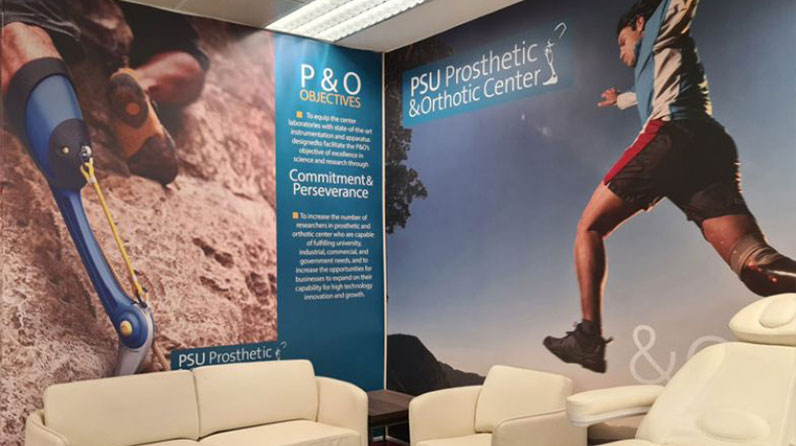3D printing technology can help build custom-made prosthetics for amputees
In 2018, almost 4,000 people in Saudi Arabia had a lower limb amputated, and more than half of these cases were due to diabetes, according to an article in Eastern Mediterranean Health Journal. However, many amputees do not receive rehabilitation services, and amputation often carries a high economic and emotional impact.
An offshoot of Prince Sultan University’s Industry 4.0 Center, the Prosthetics and Orthotics Center, run in collaboration with Nia Technologies, aims to use the latest technology to serve people with disabilities, says Abdulhakim Almajid, dean of the College of Engineering at PSU.
Making traditional prostheses through plaster casting is labour-intensive and time-consuming, taking up to three weeks to manufacture. “The idea [at the centre] is to use additive manufacturing technology to 3D-print prosthetics,” Almajid says.
3D printing technology is based on the additive manufacturing process. It is one of the emerging technologies driving the fourth industrial revolution and overhauling manufacturing processes around the world. 3D printing involves melting a single layer of metal or plastic and fusing it to a layer below, bringing an object to life layer by layer. By using a digital model of an object as a blueprint, it is possible to make highly complex, one-off objects.
PSU’s Prosthetics and Orthotics Center offers a technology that is fast and easy to adopt. Using mobile scanning devices, it is possible to scan the residual part of the leg then design and 3D-print a bespoke socket to fit the prosthetic to a person’s leg. “Sockets are custom-made,” Almajid says. “These sockets are unique to a patient and differ from patient to patient, as sometimes the amputation is at different parts of the leg, and the sizes of the patients [differ]”.
The sockets are assembled with foot and leg parts so the patient can walk comfortably. The centre has signed memoranda of understanding with two medical centres to implement this technology. The technology is currently being trialled on 10 patients.
This method of scanning people’s limbs has great advantages because “all you need is a scanner, and you can travel around the country” with the device, Almajid says. Additionally, instead of large facilities needed to cast prostheses, hospitals or clinics can have a room dedicated to 3D printing.
This is not the only research being conducted at the Prosthetics and Orthotics Center. For example, Muneer Baig, an associate professor in the College of Engineering, is investigating the development of a 3D printing filament that can be used to 3D-print prostheses. “The 3D printing itself has so many parameters,” he explains. “We’re trying to develop polymer [plastic] composites with carbon fibres to enhance the strength of the material, and that could be useful in supporting the weight of amputees.”
PSU plans to promote the technology and support other facilities to adopt it because the Prosthetics and Orthotics Center is ultimately a research centre, says Almajid. “The plan is to help as much as we can. But our main objective is not to serve but to transfer the technology to make those hospitals independent and to train them how to use this technology,” he explains.
“Hopefully, we can have [units] in clinics and every hospital dedicated to 3D printing.”
See original post at Times Higher Education Website



